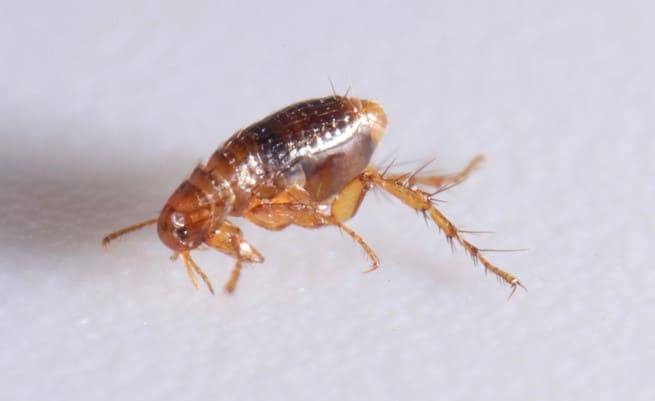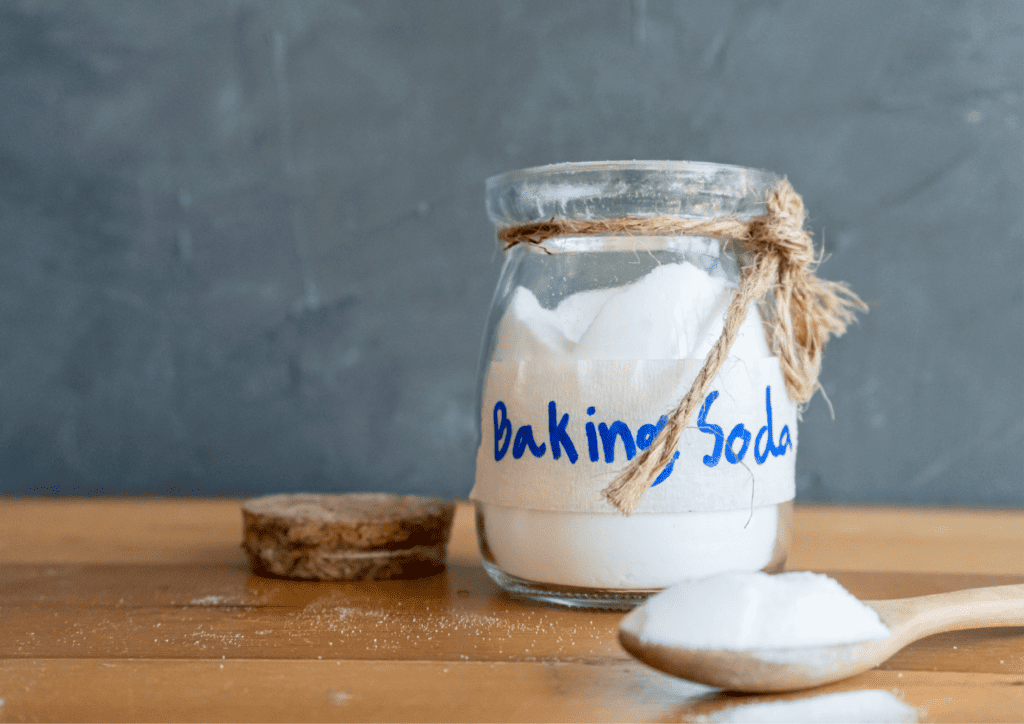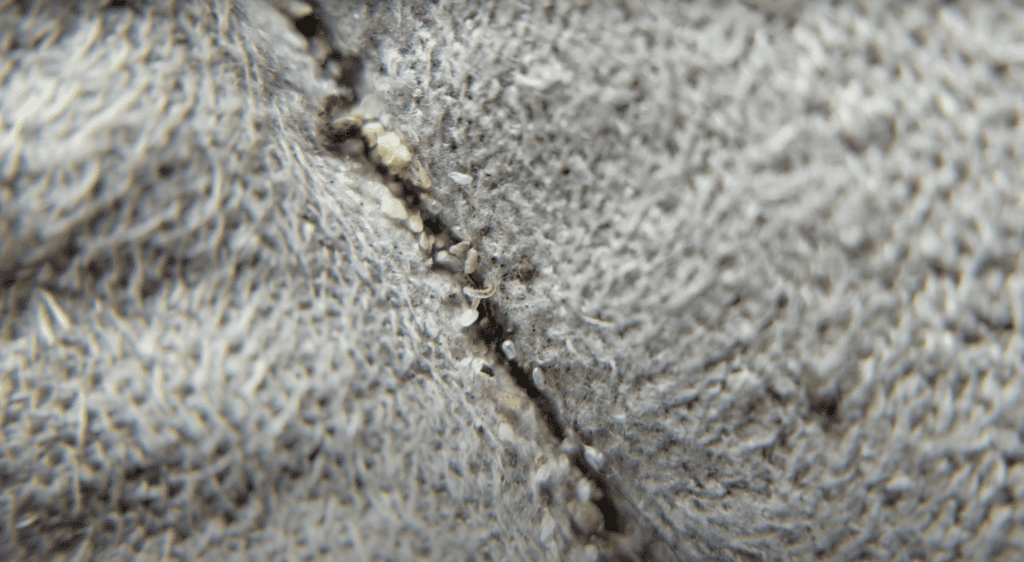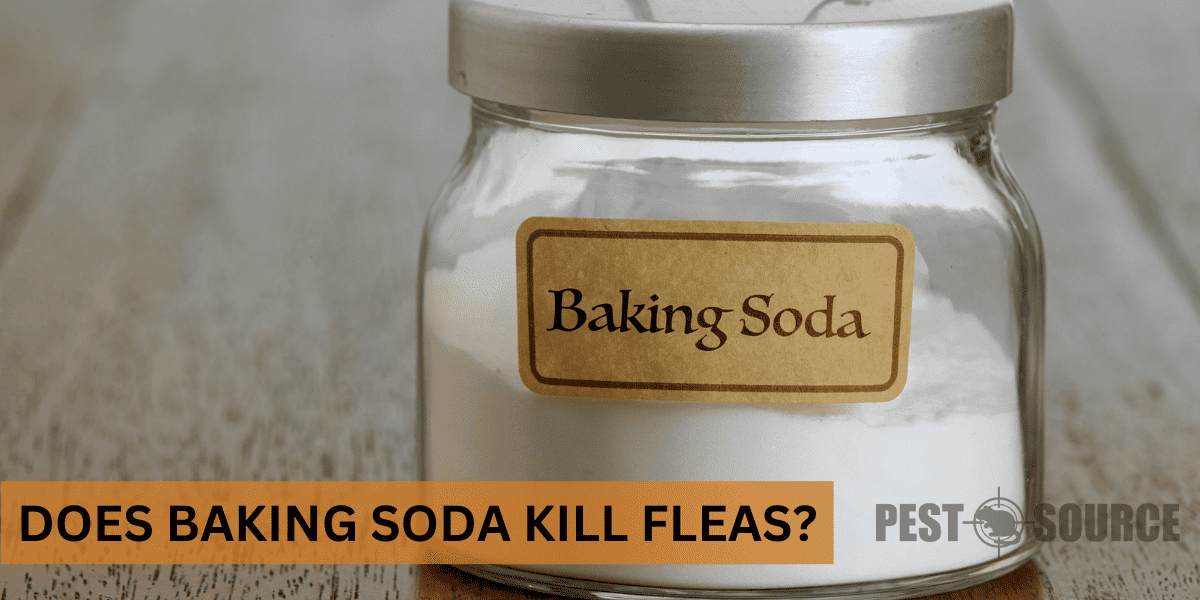Are fleas causing discomfort to your pets and infesting your home? You might be wondering if a natural and cost-effective solution like baking soda can help tackle these pesky parasites.
In this article, we will explore the potential benefits and limitations of using baking soda to kill fleas, providing a detailed examination of its effectiveness on different surfaces around your home, how it can be used in combination with other treatments, and whether a homemade flea treatment is a viable option. We’ll also touch upon the differences between baking soda and baking powder regarding flea control. Let’s dive into the world of flea control with baking soda and find out if it’s the right solution for your flea problems.
POINTS
- Baking soda is believed to help kill fleas by disrupting their exoskeleton and drying them out, but it may not be effective against all life stages of fleas (eggs, larvae, and pupae).
- Combining baking soda with salt can increase its effectiveness in flea control, acting as a more efficient desiccant to dehydrate and kill fleas.
- Baking soda can be used as a supplementary method for controlling fleas on pets, but it should not replace veterinarian-approved flea treatments targeting all life stages of fleas.
- While baking soda can be a helpful tool for flea control, it should not be relied upon as the sole solution for flea problems; instead, a comprehensive and integrated approach to flea management is essential.
- Baking soda, not baking powder, is the more effective substance for flea control due to its higher concentration of sodium bicarbonate, which acts as a desiccant to dehydrate fleas.
Understanding the Basics
What are fleas and why are they problematic?

Fleas are small, wingless insects that rely on blood meals from their hosts to survive. They are incredibly tiny, only measuring about 1/8th of an inch, but these parasites are known to cause a variety of problems.
Fleas can infest your home and bite both you and your pets, leading to severe itching, skin irritation, and even allergies. In addition, fleas can transmit diseases such as bubonic plague and tapeworms in pets. Because of their small size and rapid reproduction rate, fleas can create a full-blown infestation in your home before you even realize they’re present.
What is baking soda and how is it typically used?

Baking soda, also known as sodium bicarbonate, is a white, crystalline powder that is commonly found in home kitchens as a leavening agent for baking. It has also gained popularity as a multipurpose cleaner, as it works effectively as a gentle abrasive, deodorizer, and stain remover. Its versatility and affordability have made baking soda a staple in many households.
Does baking soda affect fleas in all lifecycle stages?
Understanding the lifecycle of fleas is crucial to effectively combating these pests in your home. The table below outlines the impact of baking soda on the different stages of a flea’s life, providing insights into why a multi-faceted approach to flea control is necessary.
| Lifecycle Stage | Affected by Baking Soda (Yes/No) | Comments |
|---|---|---|
| Eggs | No | Baking soda does not kill flea eggs, allowing them to hatch later. |
| Larvae | Maybe | Baking soda may dehydrate some larvae but is not consistently effective. |
| Pupae | No | The protective cocoon of pupae stages is resistant to baking soda. |
| Adults | Yes | Baking soda can dehydrate and kill adult fleas by disrupting their exoskeleton. |
Baking Soda and Fleas: Is There a Connection?
Does baking soda kill fleas? What’s the science behind this?
Baking soda is believed to help kill fleas by disrupting their exoskeleton and drying them out. Fleas have a waxy, waterproof layer on their exoskeleton that helps them retain moisture. Baking soda works as a desiccant, absorbing moisture from its surroundings. When it comes into contact with a flea, it is thought to strip away this protective layer, ultimately leading to the dehydration and death of the flea.
How does baking soda affect fleas in comparison to traditional pesticides?
To better understand the role of baking soda in flea control compared to traditional pesticides, the following table breaks down their effectiveness, safety, and environmental impact. This comparison aims to highlight the benefits and limitations of using baking soda as a natural flea control method.
| Aspect | Baking Soda | Traditional Pesticides |
|---|---|---|
| Effectiveness | May not be effective against all flea life stages; best against adult fleas. | Generally effective against all life stages of fleas. |
| Safety | Non-toxic and safe for use around pets and humans. | May pose risks to pets and humans if not used properly. |
| Environmental Impact | Minimal; considered eco-friendly. | Can be harmful to the environment due to chemical runoff and toxicity. |
Is there any scientific research supporting the use of baking soda against fleas?
While there is anecdotal evidence from pet owners who have tried using baking soda to kill fleas, few scientific studies specifically evaluate its efficacy against these pests. More research would be needed to definitively confirm the effectiveness of baking soda as a flea-killing agent.
Using Baking Soda for Fleas on Carpets
How is baking soda applied to carpets to kill fleas?

To use baking soda on carpets:
- Start by thoroughly vacuuming the area to remove any loose dirt, debris, and flea eggs.
- Sprinkle a generous layer of baking soda onto the carpet, especially in areas where fleas are suspected to be present.
- Use a broom or brush to work the baking soda deep into the carpet fibers, reaching the base where fleas hide.
- Let the baking soda sit on the carpet for at least 12-24 hours to ensure effectiveness.
- Vacuum the carpet thoroughly again, making sure to dispose of the vacuum contents in a sealed bag outdoors.
What are the results of using baking soda for fleas in carpets?

Using baking soda on carpets can help reduce the number of fleas present, particularly adult fleas, which are more susceptible to the desiccant effects of baking soda. However, this method isn’t foolproof, as it may not eliminate flea eggs or larvae. It is best used in conjunction with other flea control methods to maximize its effectiveness.
How long does it take baking soda to kill fleas in carpets?
Baking soda will need to be in contact with fleas for an extended period to be effective. It is generally recommended to leave the baking soda on carpets for at least 12 to 24 hours to provide adequate exposure and increase the chances of the desiccant effect taking place.
Baking Soda Combined with Salt: An Effective Flea Killer?
Does the combination of salt and baking soda kill fleas more effectively?

Using a mixture of salt and baking soda can increase the effectiveness of the treatment against fleas. Salt also works as a desiccant, much like baking soda, by dehydrating and eventually killing the fleas. Combining these two substances can help achieve a more efficient dessication effect on fleas, leading to their elimination.
What’s the recommended ratio of salt to baking soda for killing fleas?
The recommended ratio of salt to baking soda for flea control is typically an equal mixture of both substances. For instance, you can mix 1 cup of salt with 1 cup of baking soda to create an effective flea-killing combination. Adjust the quantity as needed depending on the size of the area being treated.
Are there any precautions to take when using salt and baking soda against fleas?
When using salt and baking soda against fleas, there are two main precautions to consider:
- Be aware that the mixture may cause additional wear on some carpet fibers and upholstery, so test the mixture on a small, inconspicuous area first.
- Vacuum carefully and thoroughly after treating, as the mixture could be harmful to pets if ingested in large quantities.
Using Baking Soda to Kill Fleas on Pets
Can baking soda be used to kill fleas on dogs?

Baking soda may help in controlling fleas on dogs, but it shouldn’t be your primary flea treatment method. Mixing baking soda with water and applying it to your dog’s coat as a soothing paste can provide temporary relief from itching and irritation caused by fleas. However, it’s important to consult with a veterinarian for the most appropriate flea treatment options that target each life stage of fleas.
Is baking soda safe and effective for treating fleas on cats?

While baking soda is often considered safe and non-toxic for use on cats, it may not effectively eliminate fleas on its own. Just like dogs, cats need a comprehensive flea treatment plan targeting all life stages of fleas. Baking soda can help with itching and irritation, but always consult with your veterinarian before using any home remedies on your cat, as some products can be harmful to felines.
How can you use baking soda to get rid of fleas on dogs and cats?
If you want to use baking soda as a supplementary flea control measure for your pets, follow these steps:
- Create a baking soda and water paste by mixing equal parts of each. The consistency should be thick enough to spread easily but not too watery.
- Gently rub the paste onto your pet’s fur, focusing on areas where fleas are likely to be present.
- Let the paste sit for a few minutes before thoroughly rinsing it off with water.
- Comb through your pet’s coat with a flea comb to help remove any dead fleas and debris.
- Always check with your veterinarian before using any home remedies on your pet, and continue to use veterinarian-approved flea treatments as recommended.
Keep in mind, baking soda should be used only as a complementary method and not as a primary flea treatment for your pets.
Baking Soda: Practical Applications and Limitations in Flea Control
What does baking soda do to fleas on furniture such as couches?

Baking soda, when applied to furniture such as couches, acts as a desiccant that can help to dry out fleas and potentially kill them. The fine granules of baking soda can also cause physical damage to the fleas’ exoskeletons, leading to dehydration. For effective flea control, it’s recommended to:
- Sprinkle a generous amount of baking soda on the affected furniture and work it into the fabric with a brush.
- Let it sit for several hours or overnight before vacuuming thoroughly to remove the baking soda along with the dead fleas and their larvae.
How to use baking soda to kill fleas in various home environments?
To use baking soda in different areas of your home, follow these guidelines:
| Environment | Application Method | Effectiveness | Limitations |
|---|---|---|---|
| Carpets and Rugs | Sprinkle and work into fibers; let sit 12-24 hours, then vacuum. | Good against adult fleas | May not kill eggs or larvae; requires thorough vacuuming. |
| Upholstered Furniture | Test on small area; apply and vacuum after 12-24 hours. | Moderate | Limited reach in dense fabrics; may not affect all life stages. |
| Hard Surfaces and Floors | Mix with water to clean surfaces. | Low | Ineffective against fleas in crevices or protected areas. |
| Pet Bedding | Sprinkle, let sit, and vacuum. | Moderate | Requires regular application; not a substitute for pet treatment. |
Does baking soda have limitations in controlling fleas compared to commercial flea control products?
Yes, baking soda has several limitations compared to commercial flea control products:
- It may not be effective in killing all life stages of fleas (eggs, larvae, and pupae).
- It may not produce rapid and potent results like some commercial products.
- Its reach within furniture and other hard-to-reach places may be limited.
In summary, while baking soda can be beneficial in flea control, it’s important not to rely solely on it and to use a comprehensive approach to flea management.
Making Homemade Flea Treatments Using Baking Soda
Homemade flea treatments using baking soda provide an affordable and natural alternative for pet owners looking to combat flea infestations. Below is a table detailing different recipes for creating effective flea control solutions at home, using baking soda as a primary ingredient.
| Ingredients | Preparation Steps | Application Areas |
|---|---|---|
| Baking Soda + Salt | Mix equal parts of baking soda and salt. | Sprinkle on carpets, furniture, and pet bedding. |
| Baking Soda + Water Paste | Create a paste with equal parts baking soda and water. | Apply to pet’s fur, focusing on affected areas. |
| Baking Soda + Diatomaceous Earth (Optional) | Mix equal parts baking soda and diatomaceous earth. | Use on carpets, furniture, and areas frequented by pets. |
| Baking Soda + Essential Oils (Pet-safe) | Add a few drops of essential oils to the baking soda and salt mix. | Apply to home surfaces and pet bedding for additional repellent effect. |
How can you create a homemade flea powder using baking soda?

To make a homemade flea powder with baking soda, follow these steps:
- Mix an equal amount of baking soda and salt in a bowl (e.g., 1 cup of each). Optionally, you can also add a small amount of diatomaceous earth, another natural flea-killing agent.
- Optionally, add a few drops of essential oils that are safe for pets, such as lavender or lemongrass, for additional flea-repelling properties and a pleasant scent. Note that not all essential oils are safe for pets, so do research and consult your veterinarian before using them.
- Mix the ingredients well and store the flea powder in an airtight container.
- Use the powder by sprinkling it on carpets, furniture, and pet bedding, following the same application instructions as previously described for baking soda.
What are other home remedies for fleas using baking soda?

Aside from using baking soda as a powder, some other home remedies for fleas include:
- Creating a flea spray with water, white vinegar, and a small amount of baking soda for use on carpets, upholstery, and pet bedding.
- Mixing baking soda with lemon juice or apple cider vinegar to create a natural flea repellent that can be applied to your pet’s fur.
Remember to always consult your veterinarian before using any home remedies on your pets or in your home.
Are homemade treatments using baking soda as effective as commercial products?
While homemade flea treatments using baking soda can be a helpful supplementary method in controlling fleas, they may not be as effective as commercial products specifically formulated to target all life stages of fleas. Using a comprehensive approach, including veterinarian-recommended treatments, will be the most effective way to eradicate and prevent flea infestations.
Baking Soda Versus Baking Powder: Is There a Difference in Flea Control?
Does baking powder have the same flea-killing properties as baking soda?

While both baking soda and baking powder are common household items, their effectiveness in flea control differs significantly. The following table breaks down the differences between these two substances in the context of flea management, helping to clarify which is more suitable for the task.
| Aspect | Baking Soda | Baking Powder |
|---|---|---|
| Composition | Pure sodium bicarbonate. | Sodium bicarbonate with acidifying agents and starch. |
| Desiccant Properties | Strong; effectively dehydrates and kills adult fleas. | Weaker; additional ingredients dilute desiccant effects. |
| Efficacy in Flea Control | More effective due to higher concentration of sodium bicarbonate. | Less effective for flea control due to diluted potency. |
What are the differences between baking soda and baking powder in terms of flea control?
The primary difference between baking soda and baking powder lies in their composition. Baking soda, or sodium bicarbonate, is a single compound that is responsible for the desiccant-like effects on fleas, while baking powder is a mixture that includes baking soda and other ingredients. In terms of flea control, baking soda is more effective due to its higher concentration of sodium bicarbonate.
Conclusion: Is Baking Soda a Comprehensive Solution to Flea Problems?
Weighing the pros and cons: Is baking soda a viable solution for flea problems?
Baking soda can be a helpful tool in combating flea infestations, providing a natural and affordable option for homeowners. However, it is important to recognize that baking soda alone may not be sufficient to completely eradicate and prevent flea infestations, as it may not be effective against all life stages of fleas.
What are experts’ views on using baking soda for flea control?
Experts generally view baking soda as a supplemental method for flea control to be used in conjunction with veterinarian-approved treatments and preventive measures. While baking soda can be an effective, natural, and affordable tool to help reduce flea populations in some situations, relying solely on it as a flea control solution is not recommended. Instead, a comprehensive and integrated approach, including appropriate flea treatments for pets and regular cleaning of home environments, will be the most effective strategy for dealing with flea problems.



